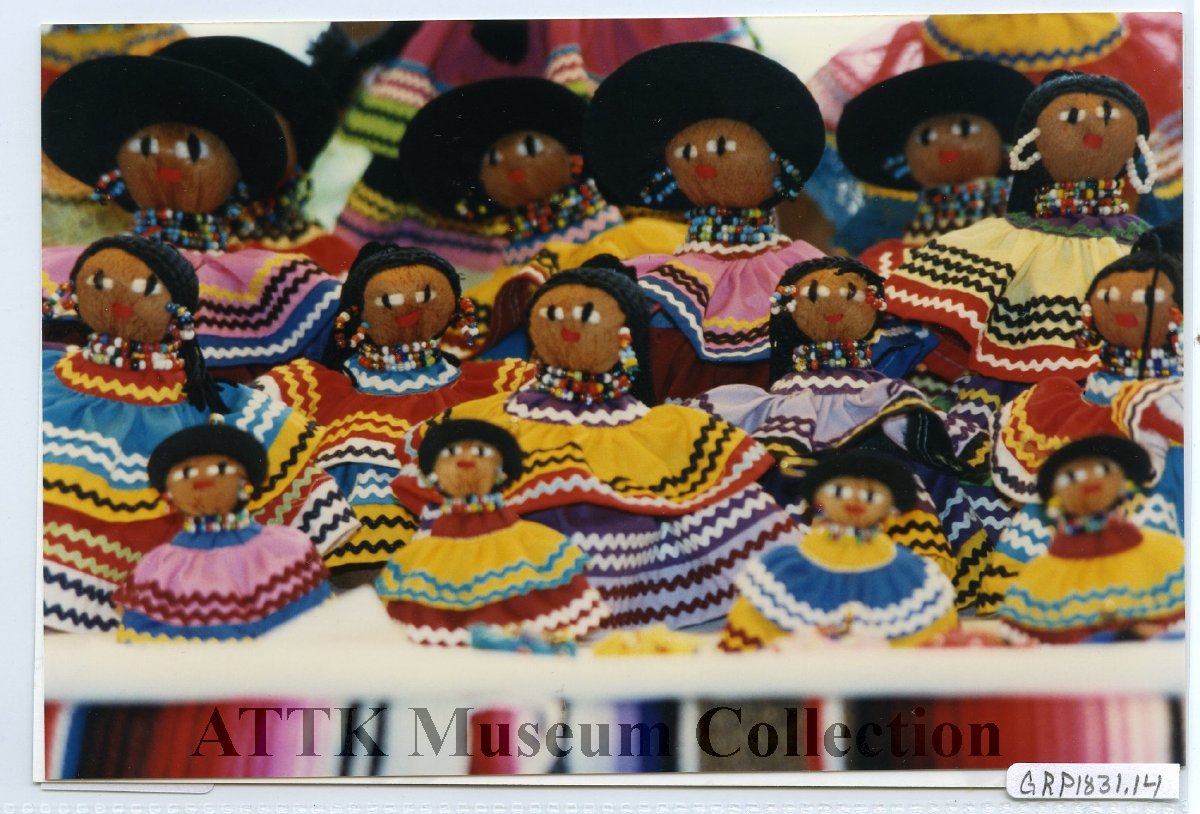Cultural Appropriation vs. Cultural Appreciation: Where is the line?
Welcome to another installment in our series about the ethics around Native American art and culture! Last week, we explored the American Indian Arts and Crafts Act of 1990, and how to be an ethical consumer of Native art. A hot topic recently, cultural appropriation can be a flashy media headline we often ignore. But what is it really? This week we will explore cultural appropriation, what it is, and what YOU can do. Avoid falling into the trap of appropriation! Follow along for tips to respectfully appreciate Native art and culture.
What is cultural appropriation?
A news article pops up with “cultural appropriation” in the headline. Do you know what it means? Cultural appropriation is commonly used to identify when the imagery, fashion, practices, music, or artifacts of a culture are removed from their original context. The significance is ignored and they are taken and used by someone else.
But, this definition can go further than the surface level. Originally, the term was mostly used in academic spaces to talk about colonialism and power dynamics between majority and minority groups. According to Rodgers (2006) there are four types of cultural appropriation: exchange, dominance, exploitation, and transculturation. In this blog post, we will talk about the form we most identify with as cultural appropriation– exploitation. The article’s citation can be found at the end of this blog post if you would like to learn more about the other forms of cultural appropriation.
Exploitation
The term ‘cultural appropriation’ has made it out of academia and into public discourse. When you hear about cultural appropriation today, it is most likely exploitation. It is “the appropriation of elements of a subordinate culture without substantive reciprocity, permission, and/or compensation” (Rodgers 2006). Someone from another culture takes elements of a subordinate, marginalized, or colonized culture. Power dynamics also come into play. Traits of the subordinate culture are “cherry picked” by someone of a dominant culture. Often, the appropriation serves to reinforce the established power dynamic and ends up harming the marginalized culture.
It’s not illegal…. Why should you care?

GRP1831.14, ATTK Museum Collection, Seminole Dolls
Unlike advertising or selling fraudulent art like we discussed last week, cultural appropriation in most cases is not illegal. The difference lies in advertising; if something is appropriated, but they are not claiming Native heritage, it is not covered by the American Indian Arts and Crafts Act of 1990. It can be tricky to recognize when appropriation is occurring without legal rules to hold it against. When someone appropriates something from another culture it can be through ignorance of the harm. They may be attempting to show appreciation of the culture, but going about it incorrectly. Or, they may not see the harm and feel like it is not a big deal. It is not illegal – so why should you care?
Appropriating from marginalized communities and cultures can have deeply harmful effects. Like discussed below, it may take resources, labor, and economic opportunities from those communities. It also may lead to the fracturing of cultural identities. Appropriation perpetuates harmful stereotypes and reinforces the power differential. It also normalizes harmful language, slurs, and damaging imagery.
An example of this is the name change of the Washington Commanders from Washington R-word. As of February 2022, they have adopted the new Washington Commanders name and logo. But, it took decades of pressure and critiques to facilitate change despite the fact the previous name included a racial slur. While they did in the end adopt a new name, it did not negate the decades of damage leading up to that point. Numerous other teams also exist that perpetuate these negative stereotypes. The change of the Washington Commanders’ name didn’t prompt sweeping change for other inappropriate team names.
Cultural Appropriation of Native American Culture(s)
Native American culture isn’t a monolith. Currently, there are 574 federally recognized tribes in the United States. Many more tribes or bands are not state or federally recognized. Like many cultures, these tribes are not all the same. While some things may be similar between two tribes, they are not the same. Tribes in the Southeast, like the Seminole Tribe of Florida and Miccosukee Tribe of Indians of Florida, can have significantly different practices, clothing styles, and language from a tribe from a different part of the country.
One harmful effect of the normalization of cultural appropriation is ignorance of these differences. By buying an “Indian” costume to wear for Halloween, you are participating in the erasure of many vibrant cultures and practices. Many non-natives are ignorant of Native cultural practices, or even that these cultural practices still exist at all. To often not even have a seat at the table and yet still have aspects of your culture taken and exploited for other’s gain can be extremely damaging.

It’s Not a Costume
The fashion industry often appropriates Native designs, fashions, and imagery without attribution. People interacting with the items have no context for the original intention. Aspects of many cultures may be blended together. Companies or people with no affiliation profit from this appropriation. The “It’s Not A Costume: Modern Seminole Patchwork” exhibit, originally on exhibit from December 2014-November 2015, was co-curated by artist Jessica Osceola (Seminole) and former Curator of Exhibits Rebecca Fell of the Ah-Tah-Thi-Ki Museum. This exhibit explores the concept of design appropriation of Seminole patchwork.
According to the online exhibit, theft of tribal designs are “hurting tribal arts, artists, and more importantly the identity of the tribal people.” Not only does it undermine their sovereign right to their own cultural practices, this theft also profits off of their labor without compensation or attribution. “For the Seminoles” the online exhibit reads “the patchwork design is diluted and becomes less meaningful when others wear or create it without an understanding of its history.”
Appropriation vs. Appreciation
Does this mean you can’t appreciate other cultures at all? Of course not! But, there is a fine line between appropriation and appreciation. To appreciate other cultures, you need to do the work to honor and respect the culture and its people. It is a learning experience, where you gain knowledge and deepen your understanding over time.
As an example, it is stated in the “It’s Not A Costume” exhibit that “buying authentic works and supporting the original artist is an essential practice.” We know this is the best way to ethically purchase Native arts and crafts. See our post last week for more info. But, it also means that the way you are engaging with the culture is from a space of respect and not appropriation.
Some designs are attributed to a particular artist or hold a special meaning within Seminole patchwork. To properly appreciate Seminole culture in this context, you need to make sure you are being sensitive and honoring. Do not purchase fraudulent or stolen designs, as you may not have the moral right to own or display them. Avoid items that are culturally significant that you do not have the right to wear or own. Chances are, if you are asking yourself these questions you are not Seminole. Therefore, you need to engage with that culture from the space you inhabit, instead of attempting to co-opt aspects of the culture for yourself.
What Can You Do?
Be Mindful
One of the best things you can do to avoid appropriating from other cultures is pay attention and be mindful. Critically think about your choices. As yourself: Do they play into racial or cultural stereotypes? Are you profiting off of someone else’s culture? Is someone else profiting off of a culture that is not their own? If you are wearing a fashion or piece of clothing from another culture, reflect and think how it got to be in your wardrobe. Be mindful of items that may be culturally sensitive or spiritual.
Be an Ally
Stand up when you see someone being insensitive and appropriating another culture. Use your power to engage in conversations about appropriation.
Examine your intentions
Reflect and examine if you are being genuine and sincere in your appreciation. Do you just want to engage with it because it’s trendy? Or are you doing the work to learn about the culture and practices?
Remember that these cultures still exist!
All too often, people think of Native or indigenous people as only existing in the past. They mentally delegate them to history books. This could not be more wrong! Native people are still around. Remember that you can appreciate these cultures in real time. Attend events hosted by tribes, visit their museums, buy arts and crafts from Native artisans, and meet people! Instead of learning about them from careless, stereotypical representations, show up and learn from them yourself.
While cultural appropriation is a heavy topic, it is an important one to discuss. Talking about issues like this are imperative for working towards a more respectful, honoring, and inclusive world. Like when purchasing Native arts and crafts, the most important thing you can do is be a critical thinker about your own actions. Take responsibility for what you do. Best of all, do the work to learn and engage with other cultures in a respectful and appreciative manner.
Next week, join us for the final installment in our Ethics and Native cultures series as we talk about How to be an Ethical Eco-tourist in Indian Country! Look back on the first installment, about Ethical consumption of Native Arts and Crafts here.
Additional Resources:
Rogers, R.A. (2006). From cultural exchange to transculturation: A review and reconceptualization of cultural appropriation. Communication Theory, 16: 474-503
Allies for Indian Country – National Congress of American Indians



Pingback: Ecotourism in Indian Country - Florida Seminole Tourism
Caradonna Adventures
Cultural appropriation refers to the act of taking elements of a culture that is not one’s own, without permission or understanding of the original culture’s meaning and significance. It can be seen as a form of exploitation and can be hurtful to members of the culture from which the elements were taken. It often perpetuates harmful stereotypes and reinforces power imbalances.
Cultural appreciation, on the other hand, refers to a respectful and meaningful engagement with the practices and traditions of a culture that is not one’s own. It involves learning about and valuing the culture for its own sake, rather than using it for personal gain or profit. Cultural appreciation can lead to mutual understanding and respect, and can foster a sense of connection and shared humanity between different cultures.
It is important to understand the difference between these two concepts, and to be mindful of one’s actions and intentions when engaging with different cultures. It is important to respect and honor the significance of cultural traditions and customs, and to seek permission and understanding before participating in or appropriating them.
Kaylis Stone
This explanation, as with many I’ve read, leaves out something important. If cultural appropriation differs from cultural appreciation in significant part based on whether the individual doing the act/using the item/etc., “Understands the original culture’s meaning and significance” then non-members of the originating group can wear clothing items, jewelry, and use anything that isn’t restricted by the original culture. On the other hand, I’ve frequeningtly seen and heard people claiming something is appropriation solely because the individual isn’t a member of the particular group. These definitions aren’t compatible.
As an example, if a person donates a traditional item of clothing from their own culture to Goodwill is or is it not acceptable for someone to buy and wear it in full appreciation after researching what the style and designs signify? By donating the item permission seems to have been given and the other criteria in the reply above has been satisfied.